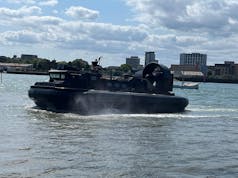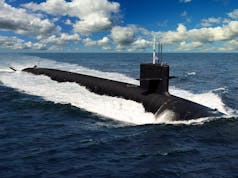The deployments reflect the emphasis placed on NATO in last year’s Strategic Defence and Security Review.
According to a press release, this is the first time since 2010 the UK is to contribute to NATO’s Standing Maritime Group 1, an enduring commitment to having NATO warships at sea, which will include two deployments planned this year:
- HMS Iron Duke, a Type 23 Frigate, from January to July, operating in the Baltic sea;
- A Type 45 Destroyer to Standing Maritime Group 1 from October to November.
Defence Secretary Michael Fallon said:
“Increasing our NATO deployments sends a strong message to our enemies that we are ready to respond to any threat, and defend our allies.
2016 will see a particular focus on the Baltic region with our ships sent there as part of the Maritime Group, the Mine Counter Measure Group and the Baltops exercise.”
The UK’s maritime commitment in 2016 will also see:
- The provision of the NATO Response Force 2* Maritime Component Commander, Rear Admiral Alex Burton, who holds a key leadership role in the NATO Very High Readiness Joint Task Force maritime component throughout 2016.
- The deployment of three Mine Sweepers – around 130 Navy personnel in total – to NATO’s Standing Naval Mine Counter Measure Group, each for four months. This programme will include covering the Baltic Sea, North Atlantic, North Sea and the Mediterranean Sea.
- Agreement for NATO to use our National Exercise Joint Warrior in North Scotland and the North Atlantic in October of this year to train and certify the NATO Response Force maritime and air component commanders for their NRF commitments in 2017, involving upwards of 550 naval personnel.
- The contribution of two Frigates to major anti-submarine warfare exercise Dynamic Mongoose, and the UK’s largest warship HMS Ocean to Exercise Baltops in the Baltic region.
- The commitment of a Fleet Diving Unit to Exercise Open Spirit in Lithuania and Exercise Northern Challenge in Iceland.













We best build some more ship then!
Yeah, no.
Danny Morgan
Extra commitments need more ships. Our fleet is only a fraction of what it was in 1982
But then we were at the height of tbe Cold War when we still needed a massive fleet.
Maybe and we only just managed enough ships to re take the Falklands. Too few destroyers and frigates now
Agreed. I’ve never been one to complain that the Navy is “too small” or “ineffective”, but if the fleet is already undertaking its commitments then having an extra deployment to follow on is pushing the limit on effectiveness surely
They have two carriers under construction. Why not?
Increasing NATO deployments with what ships? The RN has had to use a tanker to patrol the Caribbean Sea, as well as the antarctic patrol ship Protector. Cameron and Osborne(de facto defense minister) think they can order an operation and it just happens.
we need more hulls in the water, not on the drawing board!
The extra River class oceanic patrol vessels (displacing about 1800t and 90m long) being built to keep the yards busy should all add to the existing ships comissioned of this class rather than replace any. We should have a flotilla based in Cyprus to help with the refugee crisis. Maybe order a few more if the price can be brought down. Eyes and ears of the fleet.